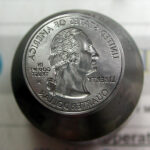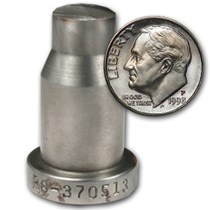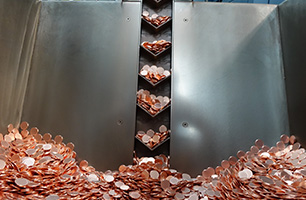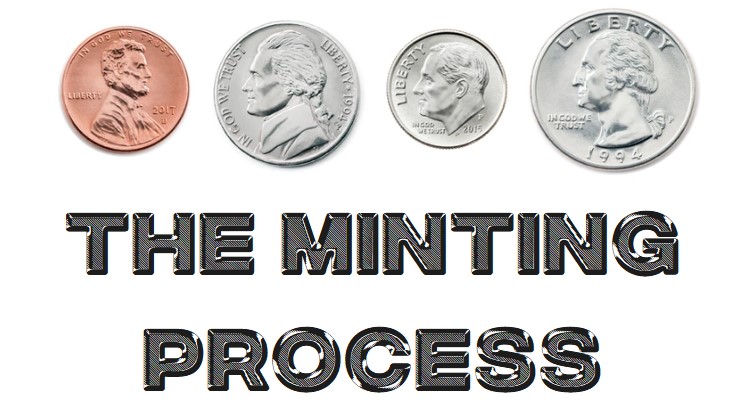The Minting Process at the U.S. Mint:
Unveiling the Magic Behind Coins
Coins have always held a significant place in human history. Serving as a medium of exchange, they not only embody the economic growth of a nation, but also represent a nation’s identity, culture, and heritage. In the United States, the responsibility of crafting these emblematic pieces falls upon the U.S. Mint. So, let us delve into the fascinating minting process behind the creation of these coins, which have been a part of American lives for over two centuries.
Understanding the minting process is critical when searching for error coins. You must know how a coin is made before you can understand how the error happened.
Design: The Journey Begins

Long before the minting process begins, the creation of a new coin begins with the intricate art of design. Talented artists work tirelessly to craft designs that reflect the uniqueness and essence of the nation, paying meticulous attention to every detail.
Once a design is finalized, it undergoes several phases of review and approval by the U.S. Mint’s committees and the Secretary of the Treasury. Only after meeting the guidelines and standards does the design move forward to the next stage of the minting journey.


Preparing the Dies
The next step in the process involves creating the dies, which will imprint the design onto the blank coin discs. Highly experienced engravers carve intricate designs onto steel cylinders, meticulously translating the vision of the artist.
These master dies are used to create working hubs and dies. Hubs will be used to create multiple working dies. These dies are then hardened so that they will be able to withstand the immense pressure during the minting process.
This die is where the term doubled-die error comes from. A doubled-die error occurs when there is a doubled image on one of the dies. That die is then used to strike multiple coin blanks, leaving the same doubled image on every coin. This is why your doubled die error must look EXACTLY like the example photo of the error you are searching for.

Blank Coin Production
Coin production starts with the creation of coin blanks, commonly known as planchets. These blanks are punched from large coiled metal strips, which are carefully weighed and inspected to ensure their consistency and quality. The chosen metal, usually copper or nickel, is fed through a blanking machine that stamps blanks of uniform size and shape.
Edge Lettering
Some coins, like the iconic quarters, have special edge lettering. This process involves using a collar, a circular piece of machinery, to shape the edge and engrave necessary text or serrations on the coin.
Minting: Where the Magic Happens
Once the coin blanks are prepared, the minting process can begin. This is where the blank coins (called blank planchets) are struck with the die to create the coin. The blanks are fed into large presses that apply tremendous pressure to imprint the design onto both sides of the coin simultaneously.
These powerful presses exert force ranging between 50 and 300 tons, using specially designed dies that ensure the highest level of precision for every coin produced. The pressure is so immense that the coin designs are impressively raised from the surface of the blanks.
This is where the majority of errors happen on a coin. Many different types of errors could occur like the double die error, the off-center error, the broad strike error, a strike-through error… the list goes on and on. Learn more about different types of errors here at Valuablecoinlist.com.

Quality Control
The final step in the minting process is quality control. Every batch of newly minted coins undergoes thorough inspection and sampling, ensuring they meet the stringent standards set by the U.S. Mint. This meticulous scrutiny guarantees the coins’ integrity and beauty, ensuring only the highest quality coins make their way to circulation.
The Finale: Coins in Circulation
After undergoing the minting process and passing the rigorous quality control standards, the newly minted coins are then ready to be distributed to financial institutions, businesses, coin collectors, and the general public. These coins become an integral part of everyday financial transactions and continue circulating for years, becoming a cherished piece of a nation’s history.
The dexterous hands, creative minds, and advanced machinery at the U.S. Mint flawlessly execute the minting process, turning raw materials into iconic representations of America’s heritage. The process captures the rich history, diversity, and ingenuity of a nation within these tiny, yet powerful, pieces of metal that we carry in our pockets every day. So, the next time you come across a coin, take a moment to appreciate the intricate craftsmanship and delicate artistry that brings them to life.
This was just a quick explanation of the minting process. To fully understand how a coin is made, go check out the U.S. Mint’s Website! They have an amazing website full of great information.

ValuableCoinList.com
Register for a free membership and be the first to find out about new error coins and varieties! Members can access the entire site free of charge! Upload pictures of your own error coins and find out what they are worth! Before you can get rich from error coins, you have to know what to look for… So become a member of Valuable Coin List and turn your pocket change into stacks of cash!


Leave a Reply
You must be logged in to post a comment.